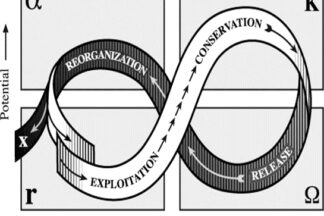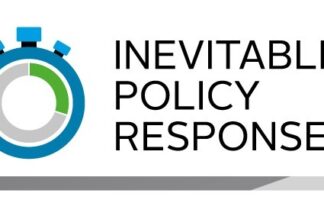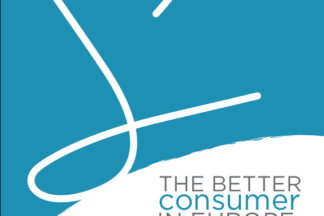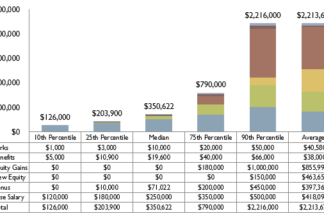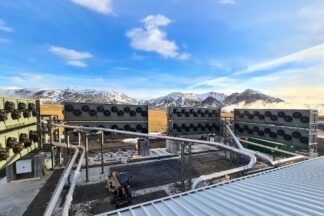When will Corona 'be over'? never. There are historical moments when the future changes direction. We call them bifurcations. Or deep crises. These times are now. Matthias Horx discusses what that means concretely.
After 10 years in the make, CETI, the European Centre for Innovative Textiles, was finally inaugurated in October 2012. The aim of the research centre is to give the textile industry a platform to research and prototype innovative textiles that can be used in sectors like: Medical, Sport & Leisure, Hygiene, and Protection sectors representing 25% of technical textile manufacturing industry; building and civil engineering that account for 10% of the production; transport making 26% of the market volume (and 15% of the market value) of technical textiles.
As part of a workshop given at the Textile Exchange 2013 conference, we ran a small survey among workshop participants in order to find out more about their perception of and experience with Scenario Planning. Here the survey results.
How do you make ‘sustainability' tangible?
The usual answer is – unsurprisingly – a ‘well, it depends’.
Which it evidently does.
Unfortunately, good case studies are extremely rare to come across.
Hence, when I stumbled across such a gem in one of the primary Swiss news papers, I jumped at the opportunity to summarise it for this blog.
The world ‘at the other end’ of the Corona tunnel could never be the same as before. It could be so much better than ever – with a real opportunity to put it on the rails that will make it the place we desire it to be.
Or: it could be same, but indeed worse place then ever. Where past misbehaviours is ignored at best, OK’ed at worse.
2045: scenarios for the textile and fashion industry: How will the industry look like in 5, 10 and 30 years time? Scenarios offer research-based insights, and potentially can show how realistic a world is, that looks rather quite different from what we're used to. What if Asia become today's Europe? What if we did not buy to own? What if everyone was a maker?
‘System positive’. The latest term I came a cross in the finance world, and which intends to identify business that are particularly well set up to survive the tribulations to be expected in the decades to come. Immediately the cynic in me asks: Another addition to the sustainability bullshit bingo?
And yet: the 5 questions proposed for scrutinising companies are very sharp, very relevant and very insightful.
They only fall short of one: Will the company thrive within or even thanks to the Doughnut Boundaries?
As I write this, it is late April.
And our lessons from the last few weeks in Corona lock down and the impact of the pandemic on our communities and societies, all over the world, have thrown an even harsher light onto some of the realities we either assumed as a given, or worked hard to change for years already.
And the lessons have been truly tough medicine.
What would the Inevitable Policy response mean for the consumer goods industries? What could the effects be? This instalment of a 3-part series looks at: consumption patterns, role of consumer goods industries for economic development, population behaviours when affected by severe conditions
“Show me there is demand, and we’ll be happy to cater to it.” is the most frequently received answer when asking CEOs of consumer goods companies, fashion and apparel in particular, as to why they are not producing better, more sustainable (ecological and ethical) products.
This new report, combines – to the best of our knowledge – all available data about the increasingly popular consumer demand for more responsible products in EU countries.
What would the Inevitable Policy response mean for the consumer goods industries? What could the effects be? This instalment of a 3-part series looks at shifts in costing paradigms, in transportation, and in supply chain structures.
Supply chains, as a discipline of expertise, have come out of the hiding and recognise their role in reducing corporate risk. This is notably and specifically the case in fashion and textiles. At the same time, 'design' - not just in the creation room, but in all facets where it impacts the making, delivery and use of a product or service, is increasingly recognised as relevant.
We all can see it happening before our eyes: Despite the Paris Climate Agreement to a climate trajectory of ‘well bellow’ 2 degrees (hence where the 1.5C number stems from) – the trajectory is not anywhere near that number. The Inevitable Policy Response (IPR) is the response by governments and legislators around the globe in taking action – hence enacting laws – in line with the 1.5 Degree climate goals.
At Shirahime, we have worked quite extensively over the last few months on the development of fashion industry scenarios beyond the 2020 time frame, going as far as 2045.
We mentioned for example Shell as one that used this approach to suit their own goals.
Siemens' 'Future Life' video, as presented the The Crystal in London.
A much more interesting approach, and very insightful in terms of methodology, but also how tangible the results are presented, is Siemens’ work on Future Cities
CEO pay is an ongoing topic. Stock options are a regular part of their pay package.
The way CEO pay packages handle stock options may foster short-termism. Or contribute to remedy it. Some thoughts.
As companies and countries around the world pursue net zero targets, one big question is: How do you ensure the carbon removal technologies we will need 20 to 30 years down the road are available, affordable and easily scaled?
S&P Global recently published a podcast mini-series on emerging climate technology.
The series not only introduces a range of much hyped about, CO2 saving or CO2 removing technology, but also looks at scaling, the truth of potential impact, and financial viability.It is for this reason that I would like to list the three episodes in this post – and invite everyone to spend the 3 x 20 minutes to wrap their head around these insights.
n early April this year we released a report that consolidated 60 studies, from the time period 2005 to early 2013, on the behaviour, attitudes, shopping criteria of the ‘better consumer’. Over the summer, two of the source reports used for our evaluation have been updated, expanded and released in their 2013 edition with further relevant details.
In the fashion industry we’re very taken to ‘trend’: the colours, cuts, styles, fabrics of the next couple of seasons or so. Yet few venture to think about how their very own industry will look like in, say, 2020 or beyond. Resting the case for the importance of building scenarios of the long-term future.
In 2012, we have seen risk management and sustainability play a more important part in the agendas of leading fashion brands. Nevertheless, many companies still perform poorly at many stages of their supply chain and are unaware of the risks, particularly if they lie beyond their direct operations.
The following are the the main trends we see happening in the near and mid future. A few exist already but will become substantially more pronounced; others are just about to emerge and hit the surface of public awareness.
On November 12 and 13, 2013 the yearly Textile Exchange conference took place in Istanbul, Turkey.
I was invited to run a workshop on Scenario Work as one of the 'Strategy' break out session on the first day. The workshop was fully booked with 25 highly interested and active participants. In 90 challenging minutes they experienced a compressed version of a Scenario Planning workshop.





